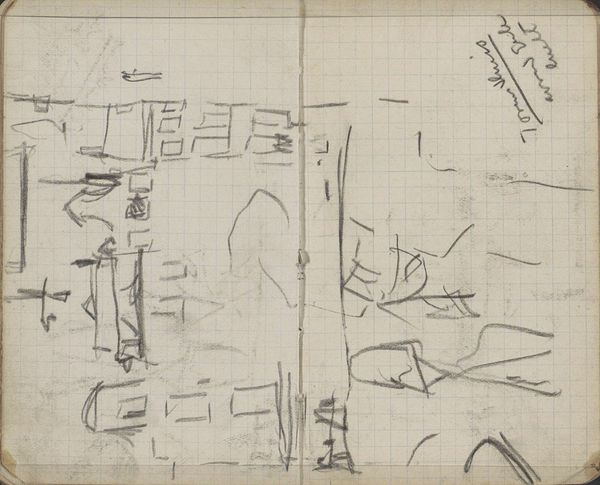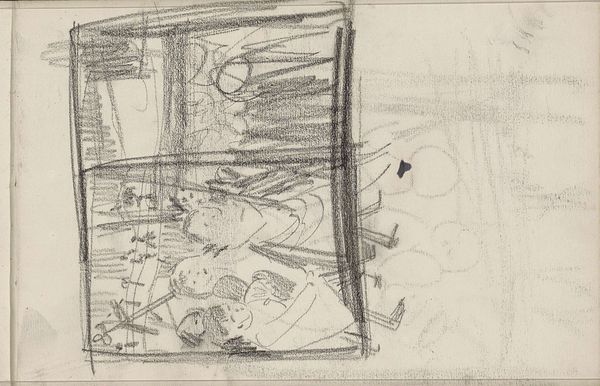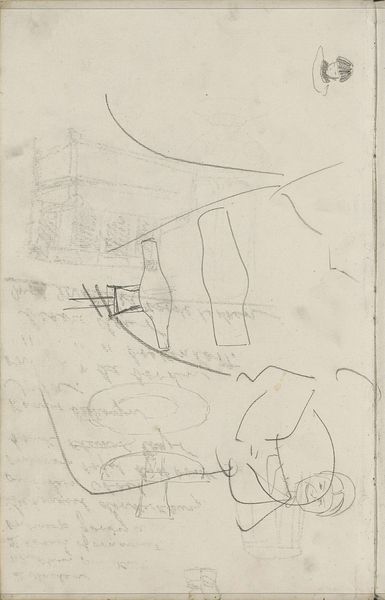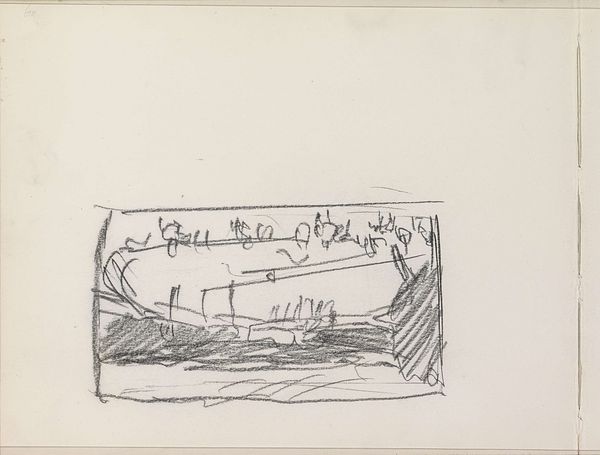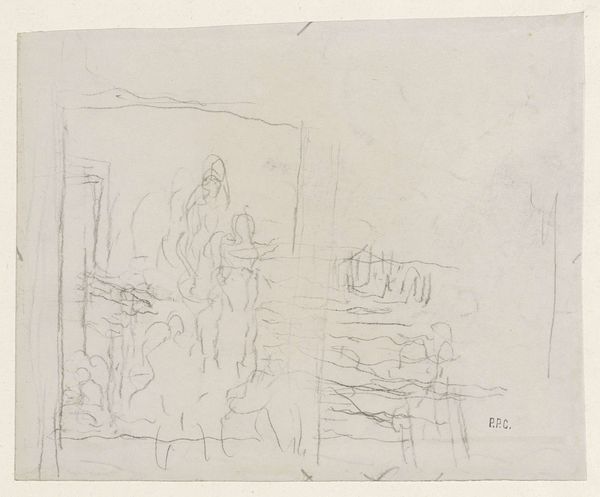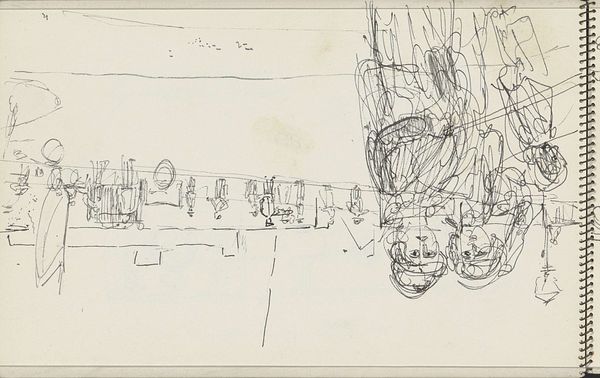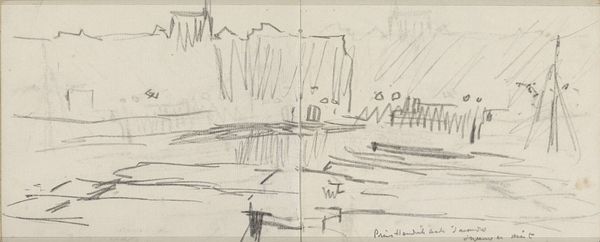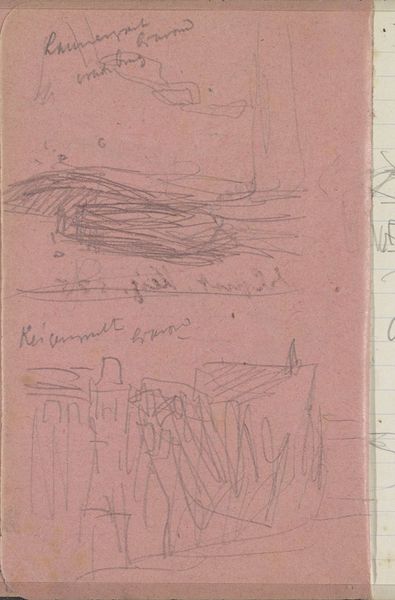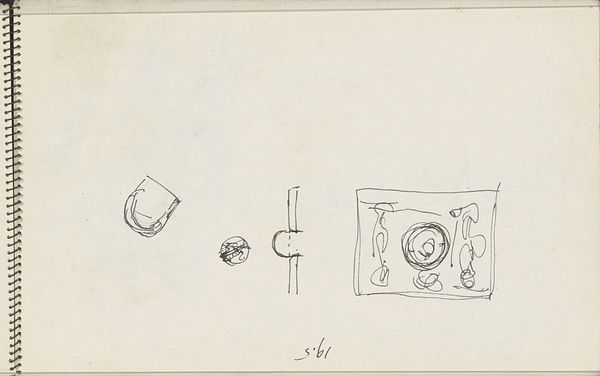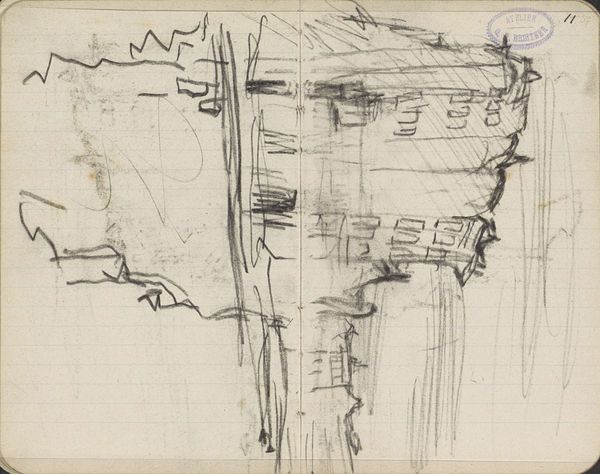
drawing, paper, pencil
#
drawing
#
landscape
#
figuration
#
paper
#
pencil
Dimensions: height 91 mm, width 152 mm
Copyright: Rijks Museum: Open Domain
Editor: Leo Gestel's pencil and paper drawing, "Wielerwedstrijd," made sometime between 1891 and 1941... it's such a quick sketch, almost frantic. It captures a landscape, maybe, with what looks like cyclists at the bottom. What jumps out at you when you look at this? Curator: Oh, the chaos of speed, definitely! It's like Gestel caught a fleeting impression, a blur of movement rather than a precise rendering. Don't you think it almost feels like a memory of a race rather than a scene directly observed? All those energetic, scribbled lines. Makes you almost feel the wind. Editor: Absolutely. I see that. Memory... But how does this style, so raw and immediate, relate to other works he might have done? Does it fit into a larger artistic movement? Curator: Good question. You know, he later transitioned to styles that were more expressionistic and even abstract. So this, in a way, anticipates his evolving interest in conveying subjective experience over objective reality. Notice how little detail he gives us – just enough to suggest a feeling of speed, a landscape flying by, that poster that’s all scrawled but that we know probably provides the source of income and enticement of spectators? Editor: I see. So, in a way, the sketchiness is the point. It is less about accurately depicting a bike race and more about capturing its essence or emotional impact. Curator: Exactly! It’s as if he's whispering, "This is how it *felt*," not necessarily how it *looked*. What I see is an artist experimenting, pushing beyond the constraints of pure representation towards something more…sensory, more felt. It is the anticipation of things to come. Editor: I didn’t think about that but you are totally right. Now that I look at it through that lens, the drawing makes total sense. Thanks so much.
Comments
No comments
Be the first to comment and join the conversation on the ultimate creative platform.
